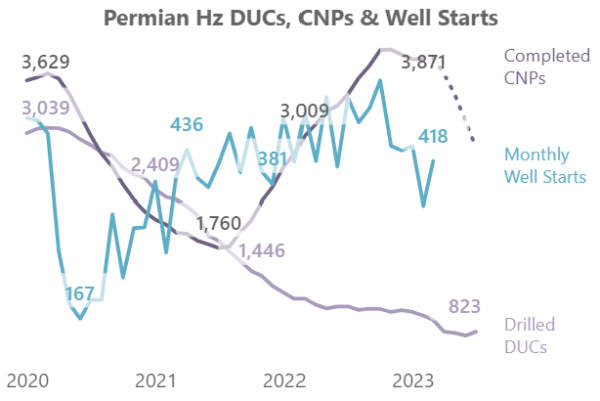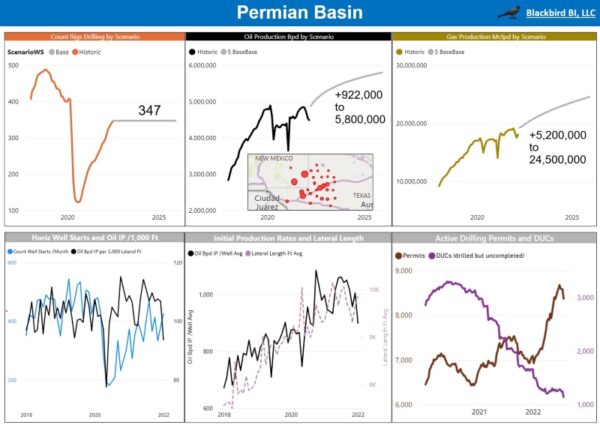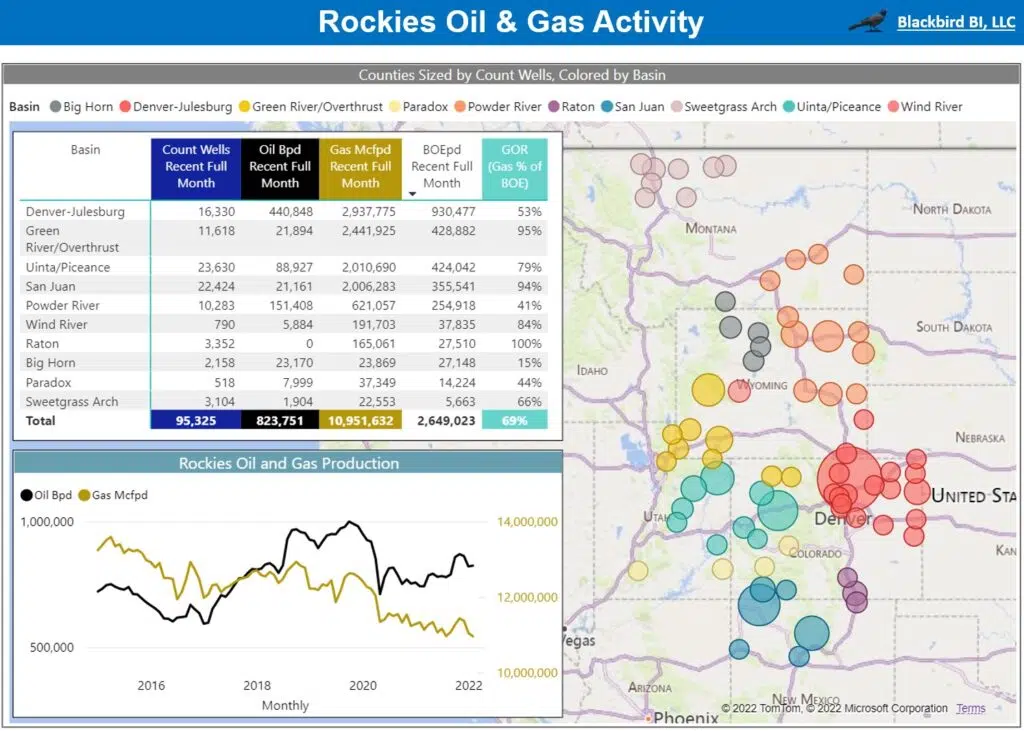Analysis Examples
Oil and gas business intel extracted from data by Ben MacFarlane
Monster Wells in Permian Going Extinct (8/14/2023)
The year 2021 had some monster wells, but we’ll probably never see another year like it.
New wells are getting deeper in the Permian. The average vertical depth has increased from 10,000 to over 11,000 feet deep in the past couple of years. Meanwhile, lateral lengths have stopped growing and flattened out at nearly 10,000 feet long on average. Even though lateral lengths have stayed flat since 2021, initial production (IP) rates of oil and gas have decreased.
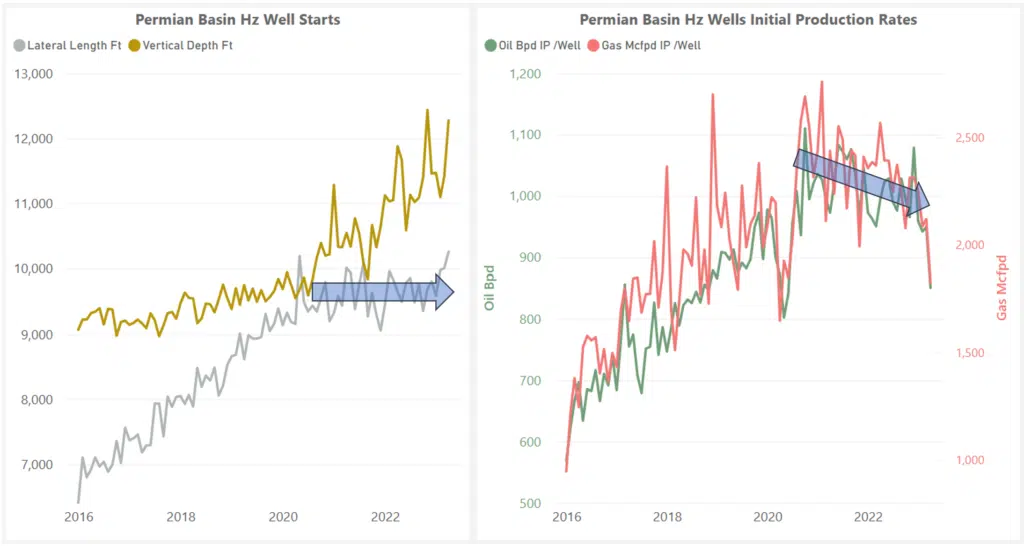
For the 33,000 Permian basin horizontal wells that started producing since 2016, the average IP rate peaked in 2021 near 1,050 Bpd oil and 2,500 Mcfpd gas.
Those were monster wells in 2021, but we’ve seen a downward trend since then.
We define the IP rate as the maximum monthly production reported during the first six months for each well.
Lower IP rates from similar lateral lengths support the conclusion that the best acreage has already been drilled (on average). It’s probably all downhill from here because it will be tough for producer innovation to outrun acreage quality declines. Rig count has also come down lately so not only is production from new wells getting smaller, but there are also fewer of them. This double negative is having a big impact on forecasted production.
Oil forecasts are especially sensitive to IP rate and rig count assumptions because oil declines faster than gas. One of our scenarios shows that at the current rig count, Permian oil production would quit growing and flatten out if IP rates get down to about 800 Bpd.
Smaller Permian wells are still considered gushers, but not like the good old days of 2021.
You can watch this story unfold by bolting on Blackbird’s logic to your favorite data subscription like Enverus, S&P Global, Hart, WellDatabase or other.
Permian’s Pent-up Supply (7/23/2023)
If you only watch the DUC inventory (drilled but uncompleted wells) then supply looks really tight with only 800 DUCs and over 400 new well starts per month. Only a 2-month supply of new wells would be a very tight market indeed, but we’re seeing a 9-month supply when including CNPs (completed not producing wells). CNPs steadily increased from 1,800 in Sept 2021 to almost 4,000 horizontal wells in Nov 2022. While CNPs have since declined to 2,800 today, they still represent a significant cushion in Permian supply and ample flexibility for producers.
In a higher price environment, Producers could ramp up production quickly where capacity allows. In a lower price environment, producers could continue growing production at a lower rig count.
CNPs defined:
CNPs are wells that State reports identify with a status as “completed” or wells with a recent completion date specified. The CNP category also includes wells eliminated from the DUC inventory count during calibration of DUCs against the EIA’s Drilling Productivity Report. We’ve placed wells reported as DUCs that have shown this status for more than 500 days in the CNP bucket.
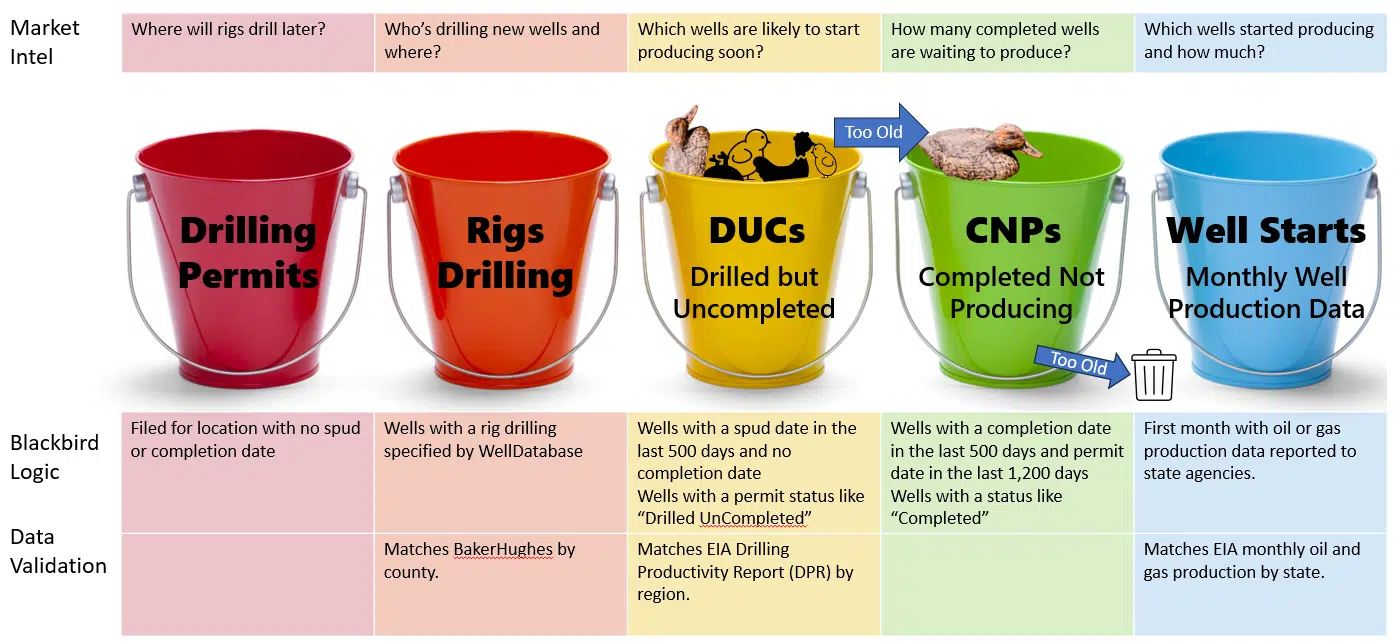
Once we see the well produce oil or gas in our monthly production data set, we move it directly to the Well Starts bucket. Since production data is lagged 4 months and we don’t have full visibility for recent months, we show it as a dashed line in the visual above and in our Power BI data platform.
CNPs get moved to the trash can when their permit date is more than 1,200 days old. Unless they someday show production volumes, we must consider the well to be a dry hole that won’t ever start production.
We believe that segregating wells that should be able to come online without the additional expense of a frac job from those that will need this investment helps better estimate the potential for a rapid production response to increases in oil prices than just using the DUC count.
Our online Power BI data platform provides us with a tool to watch the story unfold. Reach out for more info or a demo or free trial.
DJ Basin Lateral Lengths Catching Up (5/5/2023)
Midland SubBasin has longer lateral lengths then the other Top 5 oil producing areas in the U.S., but DJ Basin is catching up. I’m cheering for DJ because that’s where I live and Oxy plans to drill under my neighborhood in 2-5 years or so. It’s great to monetize our minerals and support demand, but it’s even better when the drilling rig and surface operations are almost 2 miles away from your house!
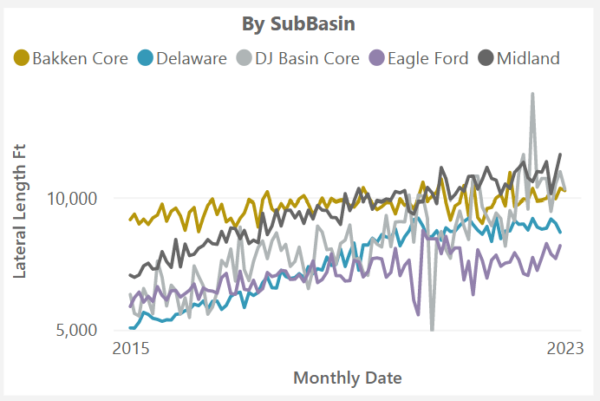
Permian Wells Stopped Getting Bigger (11/14/2022)
New Permian wells produce twice as much as new wells did in 2015. Back then, horizontal laterals were just over 1-mile long and initial oil production rates were near 500 Bpd. Now we see 2-mile laterals and 1,000 Bpd Oil IP rates. Midland SubBasin laterals keep getting longer, but IP rates flattened out since 2019 near 850 Bpd.
Delaware SubBasin IP rates kept growing since 2019 but now appear to be flattening out near 1,200 Bpd.
These are tremendously productive wells, but we’ll start to see the IP Rate per Lateral foot ratio decrease as the quality and quantity of remaining drilling locations decrease over time.
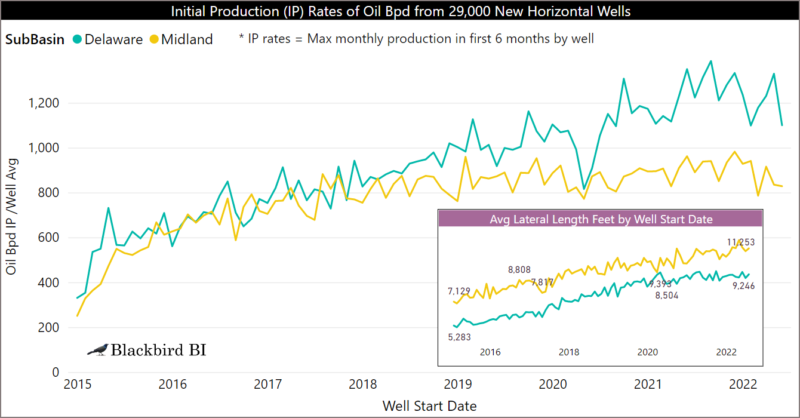
This graph shows that since 2018, the IP Rate per Lateral foot ratio has been in decline in Midland.
Delaware is showing signs of flattening out also.
The declining ratio means that moderately long laterals might be optimal physically. It also means the quality of rock being drilled might be in decline.
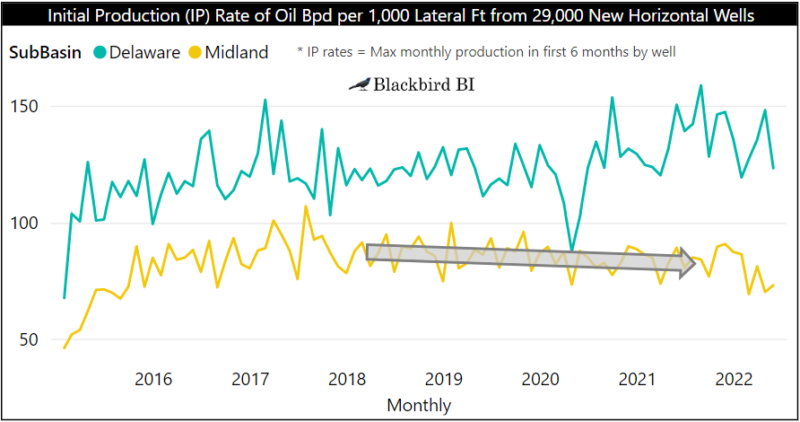
We knew that new wells couldn’t keep getting bigger forever.
U.S. Oil & Gas Trends in Major Basins
The Mineral Rights Podcast 8/25/2022
Ben MacFarlane was pleased to join Matt Sands on The Mineral Rights Podcast. They discussed U.S. Oil and Gas Trends across the major shale basins and plays. They covered rigs, DUC inventory, well starts, and future oil and gas production for Permian, Marcellus, Bakken, Powder River, DJ Basin, Oklahoma and Eagle Ford.
- Link to Free Podcast
- Link to Supplement Report with 1 page per Basin and Key Metrics by County
Rockies Oil and Gas Activity
Rockies NARO Convention 8/2/2022
- Production trends
- DJ Basin
- Green River/Overthrust
- Uinta/Piceance
- San Juan
- Powder River
- San Juan
- Rigs Drilling New Wells

